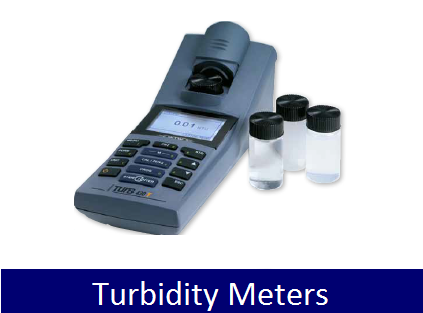Turbidity
Quality Control Using Turbidity Measurements
WTW offers ...
Performing quality control, turbidity is an indicative parameter for many applications. Turbidity measurements are of extreme importance in quality monitoring in water, drinking water, wastewater, beverage production, electroplating and petrochemical applications.
Light passing through liquid that contains undissolved solids, such as algae, mud, microbes and other insoluble particles, is both absorbed and scattered. Turbidity increases with the amount of undissolved solids present in the sample; the shape, size and composition of the particles also influence the degree of turbidity. In the past, turbidity has been determined by simply measuring light passing through the sample. However, measuring the scattered light at an angle of 90° has proven to be a more accurate method particularly at lower measuring ranges. Instruments that use this method are also referred to as nephelometers.
pHotoFlex® Turb
Multi-parameter photometer including turbidity, for water analytics and environmental monitoring.
IQ SENSOR NET Sensor for turbidity
Maintenance free turbidity monitoring on wastewater treatment plants
IQ SENSOR NET Spectral Sensor for TSS
Maintenance-free TSS measurement in wastewater or rivers
Analyzer Turb PLUS 2000
To monitor turbidity in drinking water with ultrasonic cleaning









